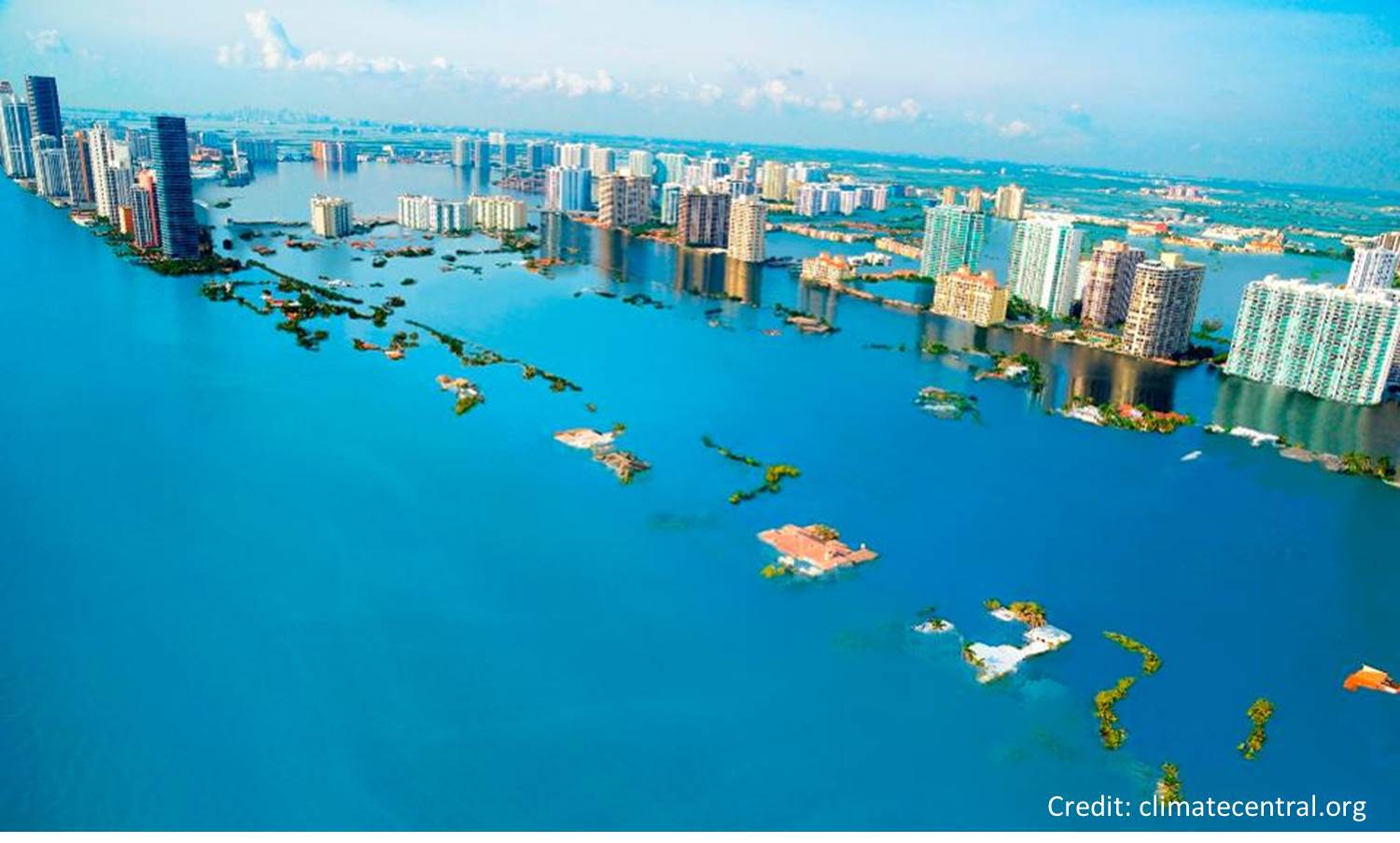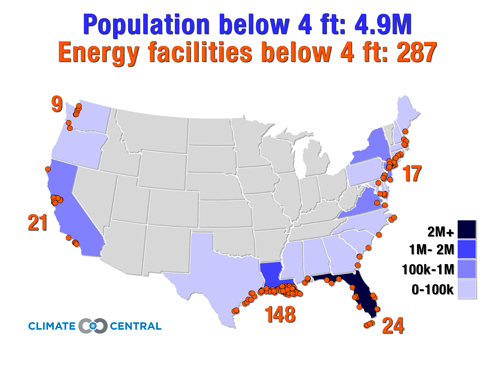

Sea Level Rise and U.S. Policy
Importance: Coastal ecosystems provide recreation, support fisheries, improve water quality, protect land from coastal storms, provide critical habitat for plants and animals, and sequester substantial amounts of carbon. Sea level rise is increasing the exposure of natural ecosystems and the built environment to extreme weather events, high-tide flooding, storm surge, and coastal erosion. Nearly 40% of the US population lives along the coast. The economic costs to US cities from flooding due to sea level rise and storm surge could amount to nearly $500 billion by 2050.
Threats: Flooding due to sea level rise and storm surge impacts essential services such as food, energy, transport, and health. In the US, there are nearly 300 energy facilities and 4.9 million Americans living below 4’, making them extremely vulnerable to climate change induced flooding.
Flooding due to sea level rise and storm surge also poses a major risk to wildlife. In the US, nearly 20% of federally protected species including the Hawaiian monk seal, Key deer, loggerhead sea turtle, Delmarva peninsula fox squirrel, and western snowy plover are threatened by sea level rise.
Opportunities: Coastal communities and decision makers need cost-effective tools and strategies to protect natural and human communities from the impacts of flooding due to sea level rise and storm surge. Policy solutions include:
- Green infrastructure: Upgrades to infrastructure – including “green” infrastructure such as marsh, coral and oyster reef, mangrove, and seagrass meadow restoration projects can help cities adapt to sea level rise and coastal flooding. The Stafford Act needs to be updated to allow for more green infrastructure projects pre and post-storm. You can learn more about our work on coastal restoration at: https://ccal.ucsc.edu/beth-howard/.
- Updated flood zone maps: Flood zone maps are used to determine which coastal properties must have flood insurance and to set rates, but many maps are out of date, leaving coastal communities with a false sense of security and placing an undue burden on renters who effectively subsidize insured homeowners. FEMA’s flood zone maps need to be updated to reflect the actual risks of sea level rise.
- Endangered Species Act (ESA): Under current law, regulators can disregard the long(er)-term impacts of climate change on vulnerable plants and animals. The ESA needs to be updated to require the consideration of climate change impacts such as sea level rise, flooding, and storm surge on vulnerable coastal species.